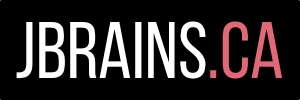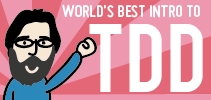Stand-Up/Daily Scrum: Measuring Trust
I originally wrote this in July 2006, and have changed some of my position since then. Read this article to the end, even if you start shaking your head as you read.
I’ve just finished reading an article by Jason Yip collecting some patterns and smell related to the daily stand-up or Daily Scrum. Rather than review the article, I wanted to emphasize a point you can find in the article, but that I believe is not adequately highlighted.
Here is one smell Jason did not mention that I have observed repeatedly: Yesterday I worked on X. Today I’ll continue working on X. You can smell this when more and more team members express their progress in terms of working on some vague, high-level unit of work, such as a larger story. This is especially a problem with teams whose average story takes several days to complete. The problem I have with reporting progress this way is that it tells me little about what’s really happening. It’s very easy to talk about the same X for several days, indicating that someone might be stuck and needs help.
Rather than describe what you were or are working on, focus on what you achieved yesterday and what you’ve committed to for today. This gives me a much better feeling of progress, and when someone says, “I achieved nothing yesterday”, but doesn’t report any obstacles in their path, you know it’s time to ask some questions. Finally, by committing to something today, you are practising keeping your commitments. The more you do that, the more your team will do that, and your team probably needs to do much more of that. Even if your commitment is small, don’t underestimate it. Think of this: “If I get nothing else done today, I’ll at least have done Y.” Indeed, Y might be the only important thing you absolutely must complete today. If so, concentrate on it.
Eight Years Later…
I wrote those words eight years ago, and while I still find problems with the Travelogue anti-pattern1, I no longer feel so comfortable about my prior advice on improving the situation. I like the intent of focusing on achivement and commitment, but I’ve become more sensitive to issues of trust in the intervening years, and I worry that the approach I recommended years ago “spends” more trust than the participants have “earned”.
This relates to an uneasy feeling that I’ve long had about the stand-up meeting: it depends on having established trust, and yet we coaches often encourage groups to adopt it as a first out-of-the-box practice, even in environments with low trust. This seems as obviously risky to me now as it seemed obviously sensible then. However you like to approach team dynamics2, I imagine that trust plays a foundational role, so I’ll assume increasing trust as an interim goal for improving most group’s interactions and effectiveness. From what I’ve seen, the stand-up meeting both earns and spends trust, but unequally. I now see the problem I’d described in this article as a signal of a trust deficit. Imagine that you’ve not achieved much in the past few days, because you’re stuck and afraid to ask for help. In a low-trust environment, this behavior seems reasonable as a self-protection mechanism. Now, suddenly, you have to get up in front of the group and talk about what you’ve achieved and what you plan to commit to. You achieved nothing! You have no idea what you might commit to! You’re stuck!
So you tap-dance around the issue, because you don’t trust the group enough to care about you and your problems. Again, this seems perfectly reasonable to me. Ratcheting up the pressure seems like a risky way to increase the overall trust level in that environment.
This leads me to some open questions.
- If we detect a low-trust environment, should we cancel stand-up meetings?
- If we insist on stand-up meetings despite a low-trust environment, which questions should we answer?
- If we insist on stand-up meetings despite a low-trust environment, what information do we reasonably think we can get from the meetings?
If you find yourself listening to the same old boring Travelogues in your stand-up meetings, then I encourage you to take some time over your next coffee break idly contemplating these questions.
I will warn you of one thing: if you continue stand-up meetings in a low-trust environment, you run the risk of encouraging project management theater (or “agile theater” or “teamwork theater”… it’s definitely some kind of theater). Of course, if you find yourself in the position to need some theater, that’s another discussion entirely. (We’ve all been there.)
References
Patrick Lencioni, The Five Dysfunctions of a Team. Trust sits at the base of Lencioni’s model, and so he emphasizes building trust as a foundation of all teamwork.
I use the word “Travelogue” to describe when someone says, “Yesterday, I worked in this part of the code base, then I spent some time on that weird configuration stuff, then I spent a little time working on the build script…” This feels like someone describing a backpacking trip around Europe: potentially interesting, but not altogether productive.↩︎
I happen to like Patrick Lencioni’s model from The Five Dysfunctions of a Team, but others prefer the Drexler/Sibbet Team Performance model, about which I know very little.↩︎


